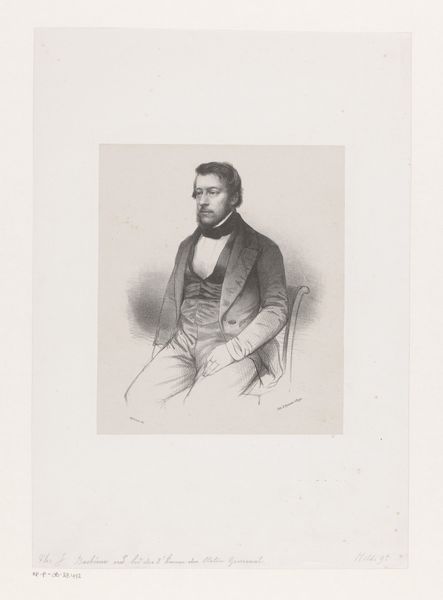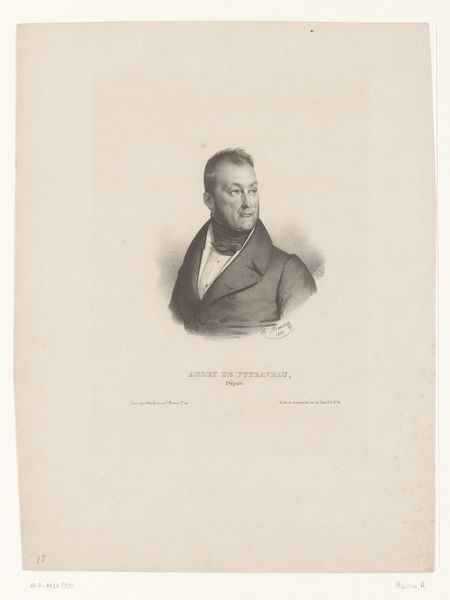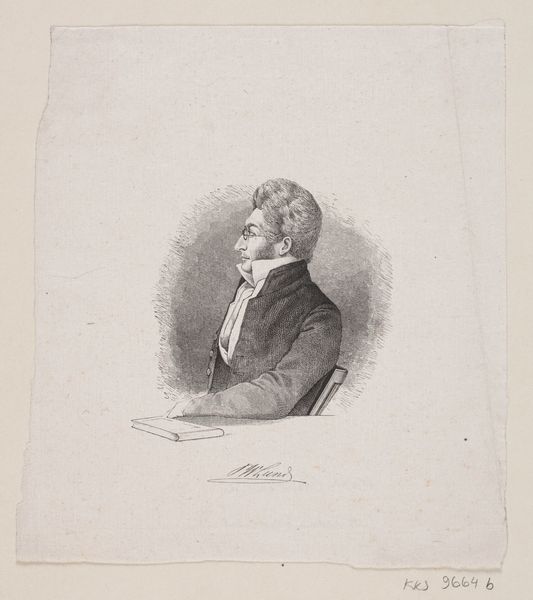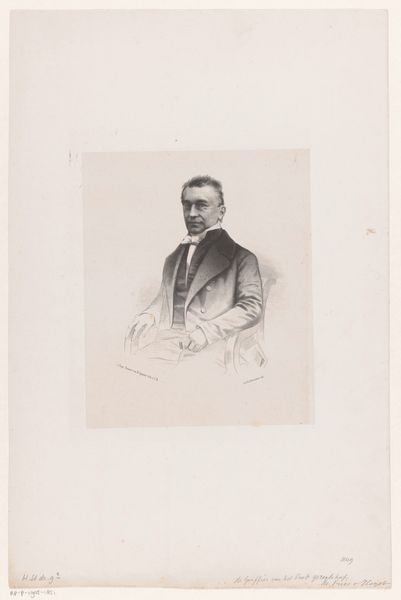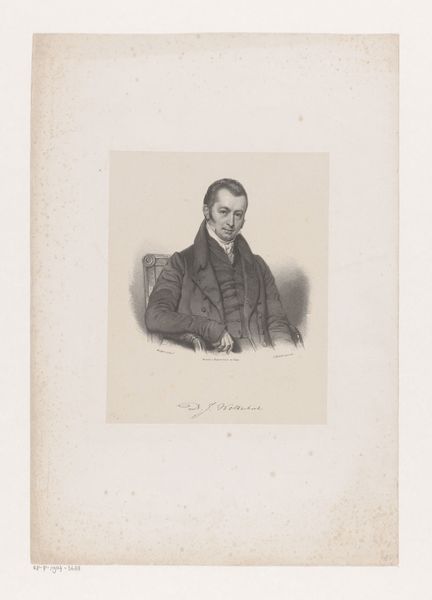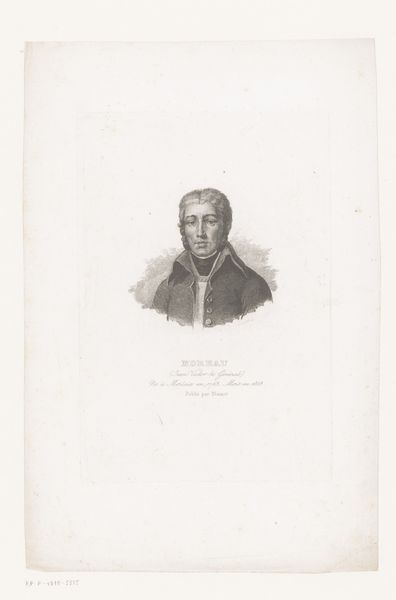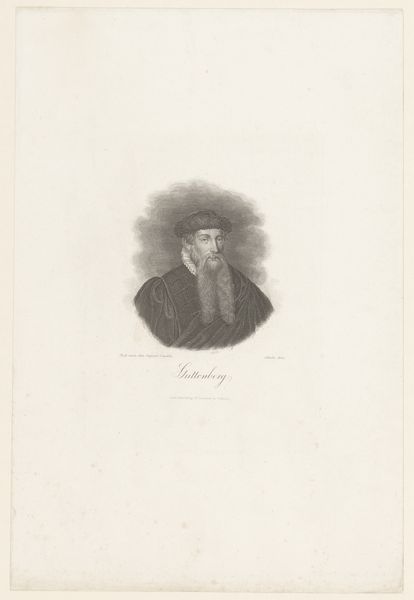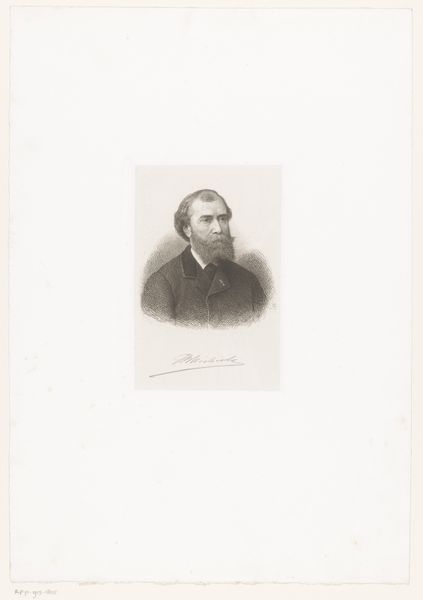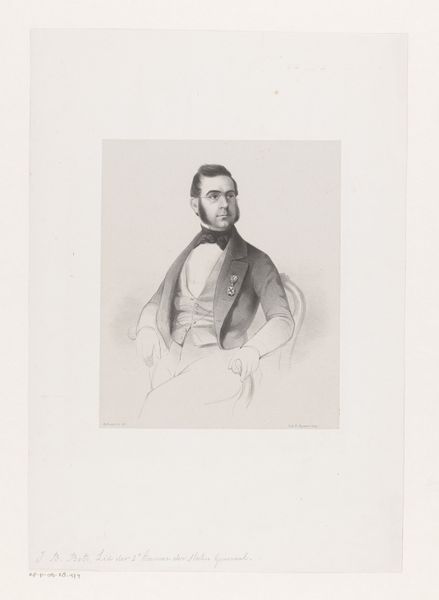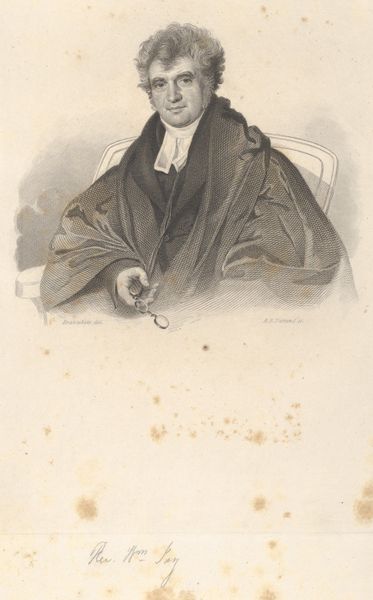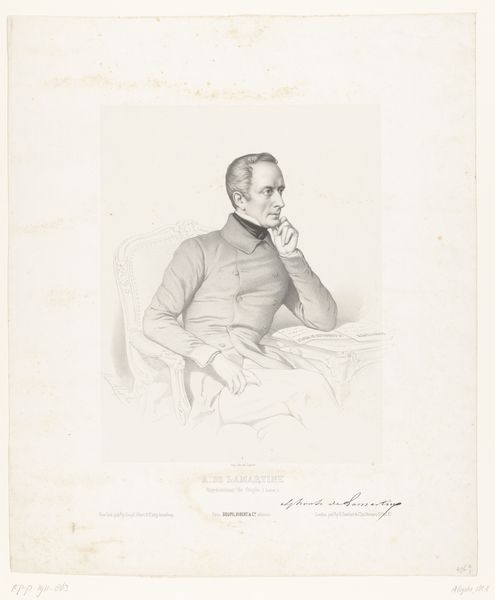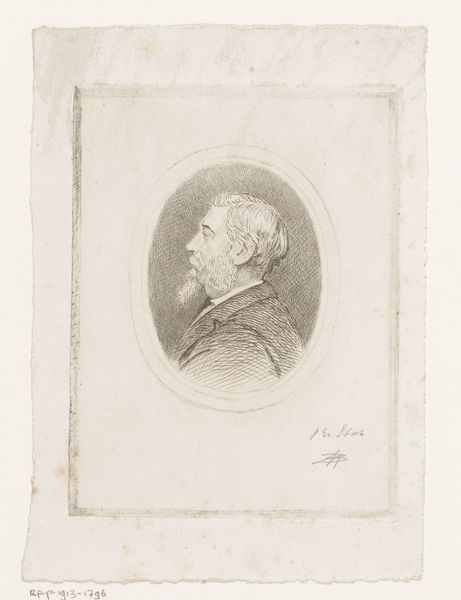
drawing, pencil
#
portrait
#
pencil drawn
#
drawing
#
pencil sketch
#
charcoal drawing
#
pencil drawing
#
pencil
#
line
#
portrait drawing
#
academic-art
#
realism
Dimensions: height 413 mm, width 313 mm
Copyright: Rijks Museum: Open Domain
Editor: Here we have a pencil drawing entitled "Portret van André-Napoléon Fontainas." The artist is Jean-Baptiste Meunier, and the artwork dates from somewhere between 1831 and 1900. What immediately strikes me is the precision and the incredibly delicate handling of the medium. What aspects stand out to you in this piece? Curator: For me, it's all about the labor invested here, the sheer act of production. Consider the process: Meunier using humble pencil on paper to create a portrait that mimics the visual language of academic painting. It's fascinating how the social standing of the sitter is being elevated by using a medium traditionally considered preparatory. Editor: That's interesting. So, you see the choice of pencil not just as a practical one, but as a commentary on social class and the means of representation? Curator: Exactly. Think about the consumption of art in that era. Oil paintings were largely commissioned by and for the wealthy. But a detailed drawing like this, meticulously crafted yet created with a readily available material like pencil, makes you question access, and to whose portraiture was normally restricted. Where does this fit? It imitates a formal, commissioned artwork through meticulous labor with accessible materials. Editor: I see. The contrast between the medium and the intended impression challenges conventional boundaries. Were drawings displayed similarly to paintings? Curator: Rarely. Finished drawings held a different, often lesser status. Meunier pushes the boundaries, almost like he's democratizing the portrait. What do you make of the lines he uses? Editor: The use of such controlled strokes with varying darkness achieves so much depth! I guess I didn’t consider how a humble medium can challenge art hierarchies. Curator: Indeed. It's not just what is depicted, but *how* it's made that carries meaning. Understanding materials and the processes unlocks the historical and social significance.
Comments
No comments
Be the first to comment and join the conversation on the ultimate creative platform.

